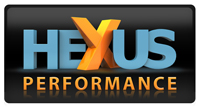Conclusion
...there remain cases where per-core licensing costs and per-core leadership represent the key dynamics in server deployment.AMD is building on server EPYC CPU momentum by convincing a growing list of partners to invest in the ecosystem. Its own figures suggest there will be over 140 EPYC-based platforms available in 2020, up from just 22 three years ago. Driving that growth is a regular release cadence offering significantly greater performance from one generation to the next.
That said, Intel will be back at the top of its own server gamer sooner rather than later. All of this means AMD needs to keep its pedal firmly to the floor and execute in every single area. If there are server instances that can benefit from specific EPYC chips, AMD needs to identify and build them quickly.
Up until today, myriad of second-generation EPYC chips performed well against their Intel counterparts. Meeting the eclectic needs of the broader industry with one blueprint isn't easy, however, and there remain cases where per-core licensing costs and per-core leadership represent the key dynamics in server deployment.
It's to these fields the new EPYC high-frequency parts speak to. Initially available in 8-, 16-, and 24-core models, careful caching considerations align with higher speeds to offer tailor-made solutions for running EDA software, relational databases, and some HPC workloads.
These processors are absolutely targetting those class of applications, and they're born from the need to keep performance and value hegemony over rival Intel in all areas.
Considered appreciation of how server workloads interact with a processors' attributes - frequency, cores, bandwidth, connectivity, price - means that the F-series have a small-yet-vital role in AMD's EPYC portfolio.
The 16-core AMD EPYC 7F52 certainly isn't cheap, but if per-core licensing and performance is paramount, it's a solution to a problem that's not been adequately addressed previously.
Best per-core performance
Helps advance TCO in certain industries
Heaps of on-chip cache
AMD EPYC 7F52
HEXUS.where2buy
TBC.
HEXUS.right2reply
At HEXUS, we invite the companies whose products we test to comment on our articles. If any company representatives for the products reviewed choose to respond, we'll publish their commentary here verbatim.















